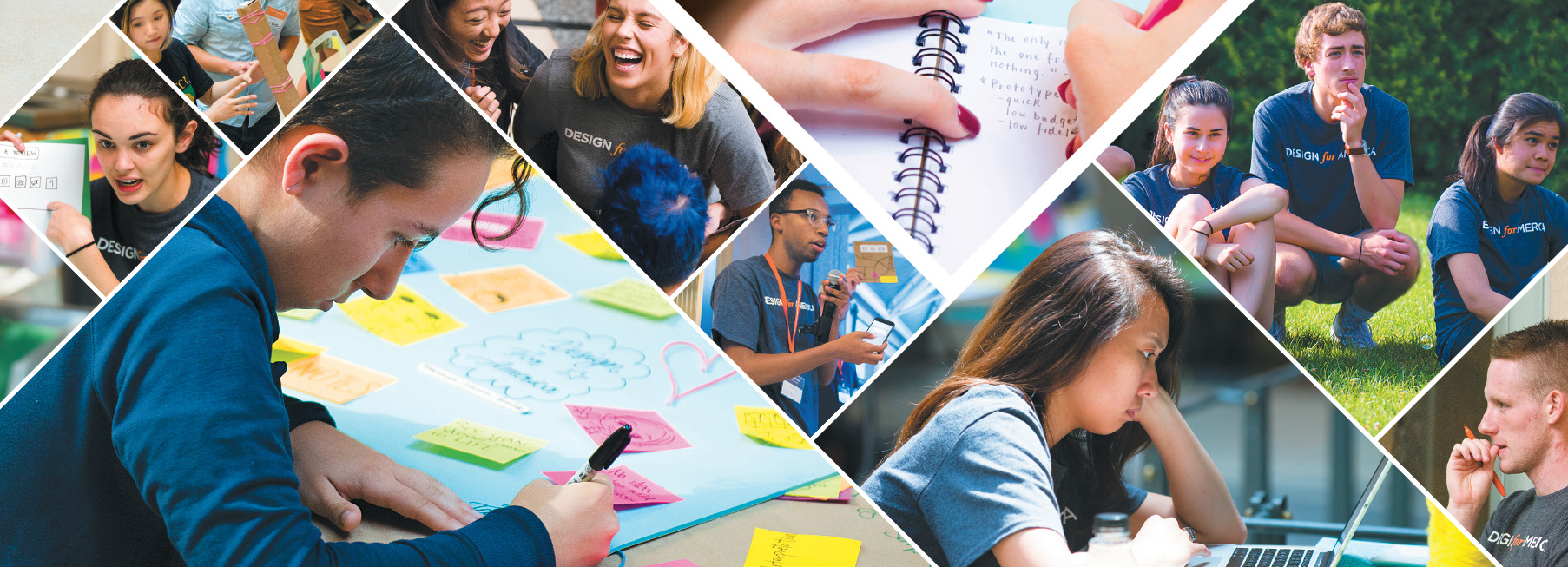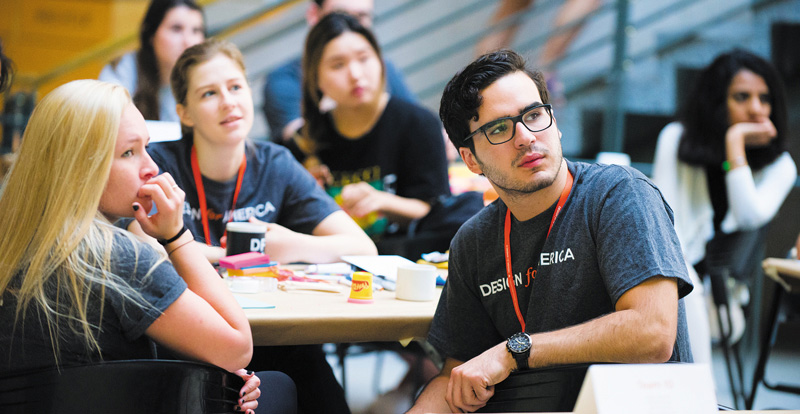Making Cities More Accessible with Human-Centered Design
Northwestern's 2017 Design for America Leadership Studio Challenges 106 students to create solutions inspired by the difficulties community members face.
A grassroots, student-led network, FDA began at Northwestern in 2009 and has spread across the nation to 37 universities, including Stanford, Massachusetts Institute of Technology, Carnegie Mellon, and Yale. More than 1,300 students are now involved with the organization, where they assess challenges using a human-centered design process and work collaboratively to implement solutions.

For Octra Edwards, the simple act of grocery shopping can present frustrating challenges.
“Often, the items I need aren’t at a level where I can reach them,” says Edwards, who navigates the aisles in a wheelchair. “And then, people sometimes overlook me when I need help because I’m down lower. I can sit there for a long time just trying to get help.”
Although wheelchair ramps and accessible restrooms have become more prevalent than ever, America’s cities still have a long way to go to becoming welcoming and safer to people with diverse accessibility needs. By sharing her story with students at the eighth annual Design for America (DFA) Leadership Studio, Edwards hopes her struggles will highlight some of the more overlooked needs and spark new solutions.
Held the first weekend of August on Northwestern’s Evanston campus, the 2017 Leadership Studio welcomed 105 students from 33 universities to learn about design, social innovation, and creative leadership. Sponsored by 3M, The James Dyson Foundation, Shure, and Sodexo, the event challenged students to use design innovation for social good by developing solutions that could improve accessibility in urban areas.
After meeting and talking with several community members, including Edwards, Leadership Studio participants brainstormed and prototyped accessibility solutions in a two-day design sprint challenge. The sprint culminated in a Project Expo, where teams presented their solutions to an audience of community members, business professionals, design experts, Northwestern faculty members, and DFA staff and alumni.

Inspired by Edwards’s story, one team presented Vertishelf, an organization method that brings items on stores’ top shelves within reach. “If you’re in a chair, reaching items on the top shelf is really impossible,” says Lydia Krauss, a junior at Rensselaer Polytechnic Institute. “We developed a simple solution that makes items more accessible to all types of users.”
Instead of organizing items horizontally on shelves, Vertishelf displays items vertically. In a typical store, for example, one shelf might hold only milk, another yogurt, and a third cream. Using the Vertishelf method, the students proposed placing a number of cartons of milk, yogurt, and cream on all three shelves.
“It’s just rearranging what they already have, so stores don’t need to invest in new hardware,” Krauss says. “Whether you’re seven feet tall, five feet tall, or sitting in a chair, you can reach one of everything easily.”
Another team presented a new art immersion experience designed for people who are seeing or hearing impaired. Their proposed gallery, called Enhance, included multi-sensory experiences, featuring more audio and tactile pieces.
“One community member with seeing impairment told us she can’t experience art galleries as well as fully-sighted people,” says Lilie Bahrami, a sophomore at the University of Colorado Boulder. “She said even if she uses an audio-guided tour, it doesn’t add to her experience. She could listen to that from her couch and have the same experience.”
Other DFA projects to improve urban accessibility included:
- RUMPLE A bumpy barrier between the crosswalk and street for people with visual impairments
- LEANING LIGHT A light that people in wheelchairs can illuminate to let an approaching bus driver know they will need the boarding ramp
- XS A crowd-sourced, online platform that holds accessibility information about public places to help people with disabilities know what to expect
- KNIGHTWATCH A wearable device that alerts people with hearing impairments to potential threats, such as oncoming traffic, in their immediate surroundings
- MOBILE MARKETS A traveling store that brings fresh, local foods to users and that has trained staff to carry groceries for shoppers
